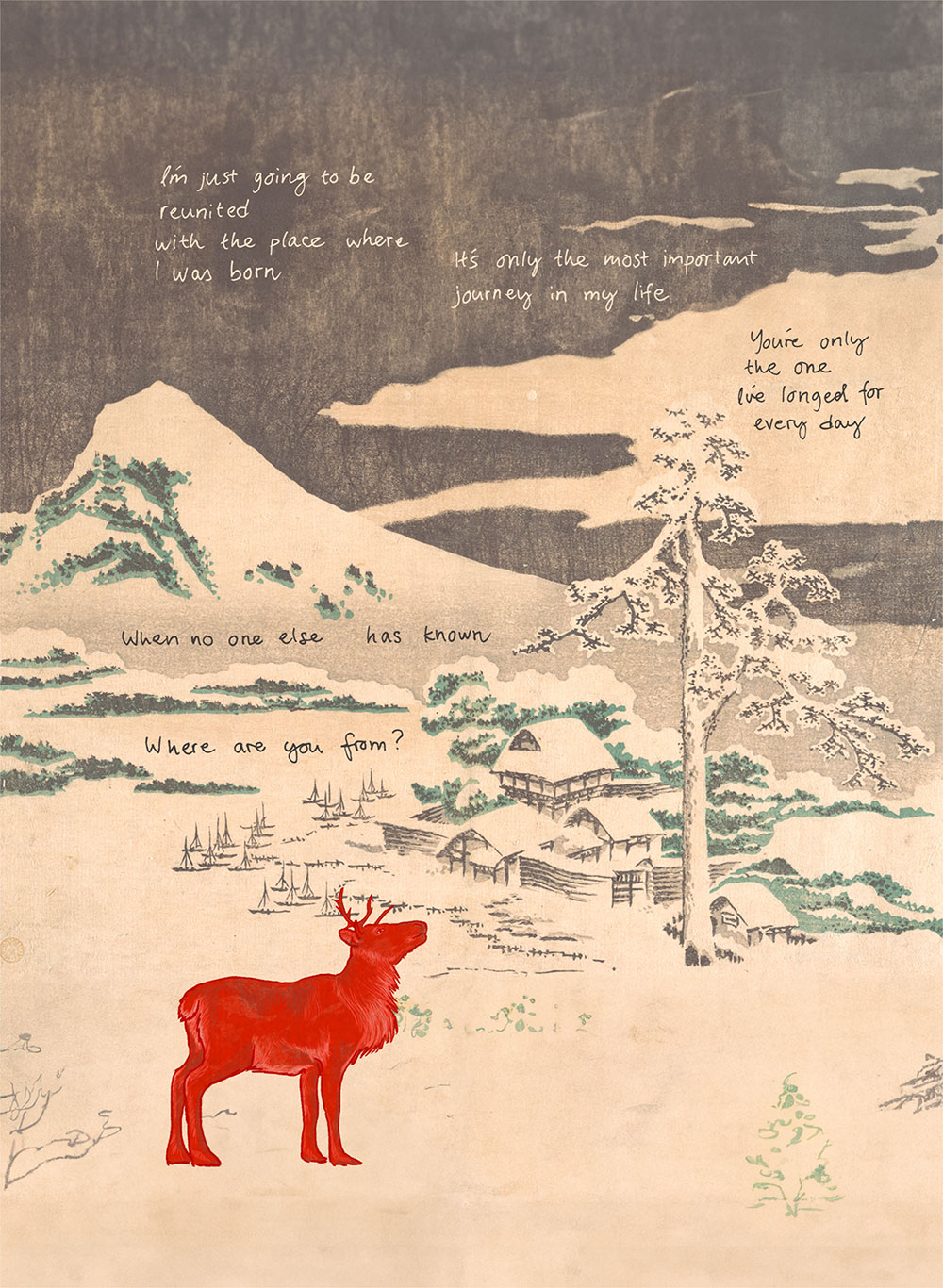
Welcome to Cecilia Hei Mee Flumé’s combined 80%+90% seminar, studying a PhD in visual communication, illustration.
Project title:
There is no place like home – Visualizing heritage, race and class through the personal story of international adoption
Language: English
Please RSVP to sara.teleman@konstfack.se before 9 January if you would like to join.
The end seminar is the last chance for the PhD student to receive external feedback on their project through the seminar format before the dissertation.
For this seminar, active participation is encouraged, though not a requirement. Participants will be encouraged to provide feedback and comments on my thesis work, regardless of their background. Therefore the number of open spots will be limited, and the rest will be by invitation only. Online participation will not be available.
I invite you to join a conversation, not a formal performance, where we share knowing and not knowing.
In order to participate actively in this seminar I recommend you to read my graphic novel manuscript as well as my ‘Companion’. How you read them is up to you. There is no minimal requirement. The link to the material will be sent after RVSP.
In the seminar, the invited discussant, Dr. Rachel Emily Taylor, will be the main person responsible for providing deep reading and feedback, but it is my desire that everyone who joins will be heard and encouraged to participate, comment and give feedback.
The Companion will be sent out in two versions. One in English and one in Swedish. Please note that the English version is roughly translated from Swedish to English.
Invited discussant: Dr Rachel Emily Taylor
Dr Rachel Emily Taylor is an illustrator, artist, researcher, and is course leader on BA Illustration at Camberwell College of Arts. She uses interdisciplinary research methods drawn from theatre, archaeology, history, and anthropology in both the analysis and making of practical work.
Taylor completed a practice-based PhD in 2018, titled: Heritage as Process: Constructing the Historical Child's Voice Through Art Practice.
Through illustration, she researched the representation of biography, historical narratives, and 'voice' in the Foundling Museum, London.
Supervisors
Professor in Illustration Sara Teleman, Konstfack
Dr Moa Matthis, senior lecturer in visual communication at Konstfack
If you’re interested in participating in this seminar, please contact Sara Teleman at sara.teleman@konstfack.se to be given access to the material.
Summary of PhD project
This PhD project is a graphic novel accompanied by a reading guide, the ‘Companion’.
The graphic novel is the artistic reply to my research inquiries:
How can academic research be mediated and shared to a wider audience?
How can researching illustration be done through illustration?
How can I showcase the capacity of illustration and the layers of language available in the graphic novel format?
How can structures of race, gender and class be addressed through illustration, and how is it embedded in images we work with?
How can visual narrative be used to critique the adoption industry and link it to the structures of class, colonialism and patriarchy?
How can subjective and personal perspectives serve as methods and strategies to evoke empathy in politically charged topics?
Illustration is in dialogue with its concept and reader, dependent on its context. Illustration has a mission to nuance, colour, open up, describe, help or make visible. Through the graphic novel and its Companion, this research project is presented in accessible ways to audiences beyond academia, using varied approaches to unpack, guide, and reflect on complex ideas, and to adapt language, sources, and references.
This project allows the image to take on the primary role in storytelling, with written text serving as a supportive element rather than the foundation. It is trying to work outside of modernist aesthetic value systems, putting craft, the time-consuming details, colour and ornament as core visual values.
The illustrations in this work challenge norms and expectations through juxtapositions of medium, style, and expression. By embracing variety, nonconformity, and liminal spaces, the images create layered narratives that explore themes of class, ethnicity, and in-between.
Through storytelling, and the combination of text and image, this work recounts a personal journey while also embodying political agency, calling for change, and doing differently by using a more commercial format that is pedagogical, inviting and accessible.